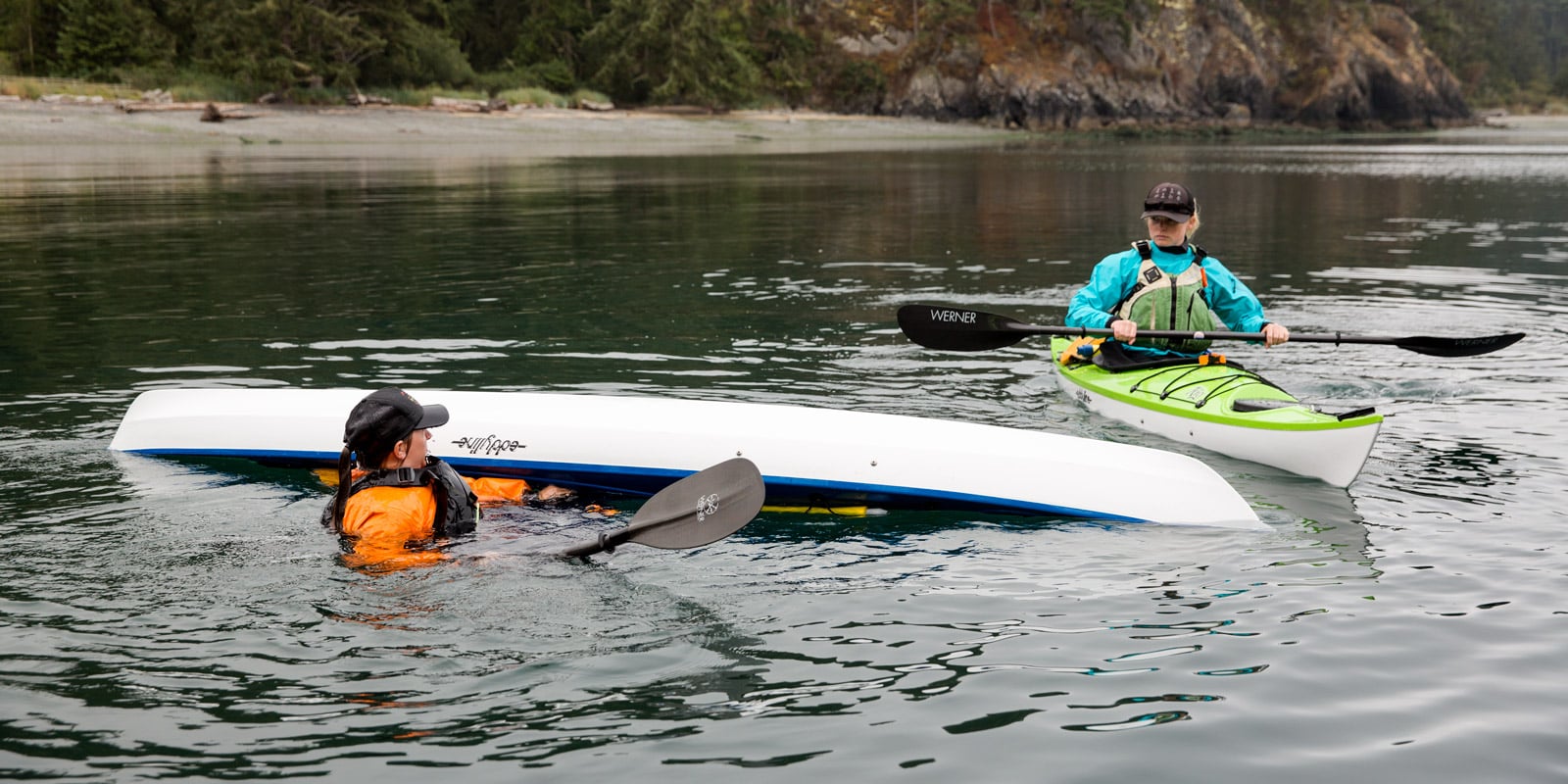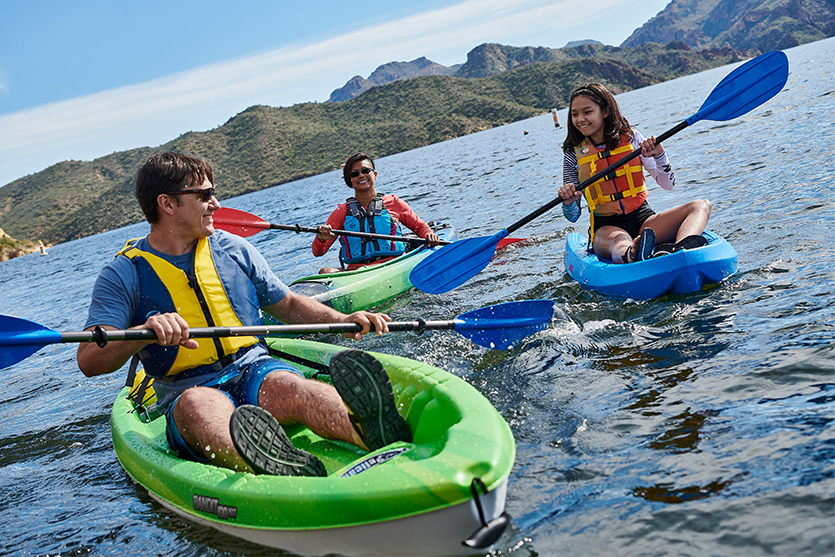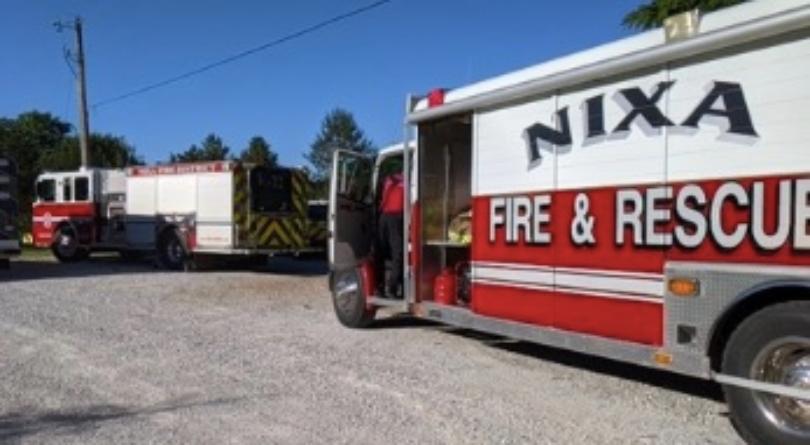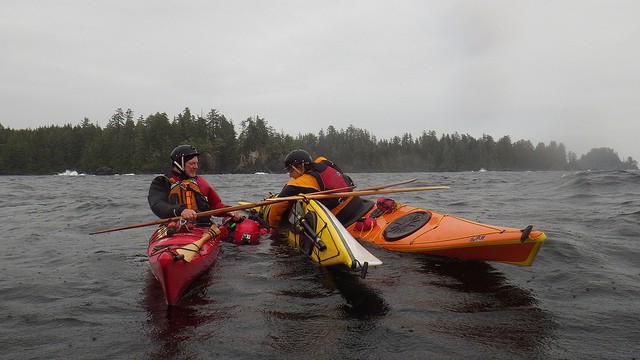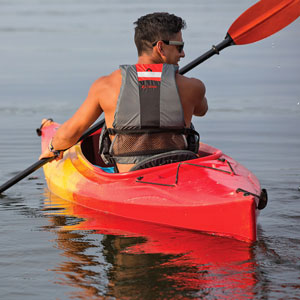Kayak Caveat
Over the last 10-15 years kayaks have become ubiquitous on waterways all over the world. They are light and cheap, provide good exercise, and adventure – but they can also be terribly dangerous. In 2018, the last year for which the USCG has published records, 84 kayakers died in the U.S., the penultimate boat type involved in deaths. Many boat owners carry kayaks aboard for recreation when at anchor, so they must be aware of the risks; but, almost every powerboater encounters kayakers along the waterways. For them, all powerboat operators should be cognizant of their wake, which can easily overturn a kayak, particularly one with an inexperienced operator.
Disturbing News Items
Each week BoatTEST gets reports from the USCG of boating accidents, and we can’t help but be disturbed by the number that involve kayakers. Fortunately, many ended with a rescue, but some didn’t.
- On August 13, a man was reported dead after kayaking in Lake Boomer in Stillwater, Okla. According to the state highway patrol, 28-year-old Blake McSparrin was found dead in the lake after heading out on a kayak at about 10:30 a.m. Troopers were still trying to figure out what happened but his kayak was found washed ashore late Thursday night. McSparrin's body was found by search teams early Friday morning.
- On August 4, Wisconsin officials said one person died following a kayak accident in Sheboygan. Fire crews were called to the Deland Park area for a kayaker that was in the water at 11:40 a.m. When crews arrived, witnesses gave them directions to where the kayaker had last been spotted. The kayak that had been used by the victim had washed up on the beach, but the victim wasn’t with it. A short time later, the kayaker was found unresponsive in the water. He was brought to shore where life safety measures were given. Officials say the victim was taken to Aurora Sheboygan Memorial Medical Center, where he was pronounced dead. Neither the gender, nor the age of the victim, were immediately released. Officials reminded everyone to wear a personal flotation device when boating.
- In Lake County, Mich., on July 30, the body of a 64-year-old man was found in the Pere Marquette River, police said. Emergency crews were called to an overturned kayak on the Pere Marquette River south off Budzynski Road in Branch Township. Upon arrival, emergency responders located personal objects in the river that indicated the kayak had been occupied prior to it capsizing. Mason County Sheriff’s Office Dive Team members and Marine Patrol searched the area until 2:00 a.m. with no results. The search resumed at 7:00 a.m. Friday and shortly before 10 a.m., Marine Patrol deputies located the body of Nicholas Howard King, 64, from Commerce Township, Mich. King’s body was located approximately 200 yards downstream of where the kayak had been located the last night. He was wearing a life jacket, according to a press release.
-
On a positive note, eight days earlier, a man in a kayak got trapped under a steel dam in Milan, Ill. First responders threw a rescue flotation device out to the man. He grabbed it and then was pulled to shore. Local news personnel saw the man walking around moments after the rescue under his own power to an ambulance to get checked for any injuries. It’s unknown if he was transported to any hospitals for further treatment.
- In Victoria, Texas, on July 18, first responders rescued a mother and child Saturday after their kayak flipped on the Guadalupe River. The Victoria Police Department responded to a water rescue call around 3:10 p.m. about a mother and child who were stuck in the river near Riverside Park and the Texas Zoo. The mother and child’s kayak flipped which left them clinging to a branch yelling for help for at least 20 minutes. Someone heard the distress call and called local authorities. Local emergency medical services and the Victoria Fire Department were on the scene assisting with the rescue. The mother and child were uninjured and went home. The kayak is missing, presumed to be floating down the river.
- A 27-year-old man was fortunate when he was found clinging to his capsized kayak on Long Island Sound on July 8 off the cost of Oyster Bay, N.Y. He was rescued around 11 p.m. approximately a half mile from Center Island, Nassau County Police said. The man was found yelling for help by a marine patrol unit and brought back to shore.
- The day before, a 75-year-old man died after his kayak apparently flipped on Monterey Lake in Salem Township in Michigan. Allegan County sheriff’s deputies responded to a 12:30 p.m. call of a person in the water. Rescuers pulled the man out of the water and began resuscitation efforts, but they could not revive him. A witness said the main had not been wearing a life jacket.
- Later that day in Marblemount, Wash., the Skagit County Sheriff’s office was searching for a 10-year-old boy who was last seen in a kayak on the Skagit River. The boy and his father, both from Chehalis, Wash., had been camping in the North Cascades National Park Service Complex when they took their kayaks for a cruise. The father wasn’t wearing a lifejacket when he fell out of his kayak, but he swam to shore. The son was still in his kayak and was wearing a pfd. The father had to hike out of the area and called 911. As of the following afternoon, both kayaks and the dad’s lifejacket had been found, but the boy and his pfd were still missing. The boy’s name had not been released and officials were hoping that he had left the area on foot.
- On July 6, a man drowned in Baker Reservoir in Warren, N.H., after his canoe flipped, spilling him and his dog into the water. State police received a report of a man in the water at about 6:24 p.m. The dog reportedly swam to shore, but the man went under and didn’t resurface, according the police. About an hour after the initial report, the man was found. His identity was withheld pending notification of next of kin.
June Reports
- June ended with a search for a kayaker missing at Diamond Lake in Oregon. The Douglas County Sheriff’s Office said Jared Bruce Boria of Vancouver put his kayak in the water late Tuesday and started paddling. Several people told deputies they heard a man in distress, but couldn’t see him. Authorities responded and joined the search to no avail. Boria’s kayak, paddle and shoes were found on a search Wednesday, but he remained missing.
- In a positive story, on June 11, two kayakers were rescued near Delaware Town access in Missouri. Nixa Fire Protection District got a call around 8 a.m. for a water rescue. A man and a woman were kayaking on the James River and overturned a mile south of the access area. The female was wearing lifejacket and clinging to debris while she called 911 and rescuers used GIS coordinates to find her. The man made his way to shore where he was picked up.
- Two days earlier, a 64-year-old woman died on Bull Creek in Missouri. According to the state highway patrol, Rita A. Farrell of Spokane, Mo., crossed shallow-water south of Round Mountain Road at about 2:30 when the kayak flipped. According to an online statement from the Western Taney County Fire Protection District, the department’s technical rescue team responded to a report of a missing woman near Elizabeth Lane. Firefighters found a man performing CPR on his wife on an island. The team used an inflatable rescue boat to bring the couple to shore while continuing to try to revive her. She was declared dead at the scene.
- On June 7, a 33-year-old man from Charlotte, N.C., died after his kayak overturned on Lake Norman. Jonathan Bouleware was kayaking near Penicillin Point on the lake. Local law enforcement said the kayak “flipped.” After a three-hour search, Bouleware was found close to the area where the boat had turned over in 44’ (13.41 m) of water. Officials said he was not wearing a lifejacket.
- The day before in Wayne County, N.C., two kayakers fell into the Neuse River. Fire-rescue personnel reportedly pulled one from the water. The rescued person said he and a friend had launched a kayak at a local ramp. They fell off the kayak and tried to stay with the boat, but one of the men, 34-year-old Derrick Wooten, lost his grip and hasn’t been seen since he slipped below the surface. A local sheriff’s office dive team responded to the scene but couldn’t find him.
- Also on June 6 in South Lake Tahoe, Calif., two kayakers suffering from hypothermia were rescued by the local fire rescue boats. The sheriff’s department responded to a distress call and called in a helicopter to aid in the search because the water temperatures are still cold this time of year. The first victim was located and retrieved and soon after the second person was found and pulled from the water.
- Two days earlier, the U.S. Coast Guard suspended its search for a 61-year-old man who was missing after falling off a kayak while fishing in Monmouth County, N.J., on the Navesink River. A storm hit the area and rough water caused the boat to capsize. He had been fishing with another person who made it to shore. Rescue and dive terms searched the area without success.
- On June 3, police recovered a body from a river in Charles City County, Va. An empty kayak was discovered with clothes and a wallet aboard near Fort Pocahontas. The Virginia Department of Game and Inland Fisheries was notified and a search ensued. It was called off that night and resumed the next day. At 2 p.m. the body of Jake Woollard was recovered. The investigation of the official cause of death is ongoing.
- On May 30, the Coast Guard rescued a kayaker who spent more than two hours in Lake Huron after his kayak capsized. Coast Guard Station Traverse City, Mich., launched a helicopter after receiving a report of a kayaker being stranded on the shore of Georgian Bay in Canada. It lowered a basked to hoist the man to safety. He was suffering from hypothermia, but had been wearing a wetsuit and a lifejacket, which the Coast Guard said probably saved his life.
- In Overland Park, Kan., on the evening of May 29, a man was reported missing around 6 p.m. after falling from a kayak on the Blue River. He had been on the water with another kayaker when he hit an obstruction at a bridge-construction site and fell overboard. Rescue crews from Overland Park & Leavwood Fire Departments in a water-rescue boat discovered the man’s body downstream.
- In York, Maine, on May 23, Thomas Ingle, 67, of Eliot, Maine, drowned while kayaking in the ocean. His kayak overturned in rough water and he was unable to make it to shore. Emergency responders could not revive Ingle after he had been pulled from the ocean.
- In Belvidere, Ill., on May 25, first responders pulled a woman out of the Kishwaukee River after her kayak capsized. The woman had been swept downstream by the current and she was hanging onto a tree limb when she was rescued from the frigid water.
Learn the Basics
The website oceankayak.com has a checklist that it recommends for newcomers and seasoned paddlers. Some highlights include learning proper paddling techniques, basic water safety and first aid. “Brush up on self-rescue first in calm, warm, shallow water, and again in more extreme conditions,” the site says.
Most important is that kayakers should always wear a lifejacket. U.S. Coast Guard regulations require that all kayaks have a lifejacket on board. BoatTEST.com recommends that anyone on a kayak wear it at all times. Wearing a lifejacket helps keep a person’s head above water and it adds insulation that can keep a person warmer in cold water.
There are pfds designed specifically for paddling that fit better and allow more freedom of movement for kayaking and other paddle sports.
Be Smart – File a Float Plan
Just as with other boats, a kayaker should let someone on land know of his or her plans and give details of how long he/she plans to be out and how many people are in the party. Check the forecast for any possible changes in conditions including weather and tides.
If a kayaker plans to paddle in surf zones or rivers with white water, wear a helmet.
Bring provisions including plenty of food and water, sun block and a first aid. Just as with other boats, have a means of communications other than a cell phone. This could be a handheld VHF radio, flares or a signaling device. Also, have a tow line — just in case.
